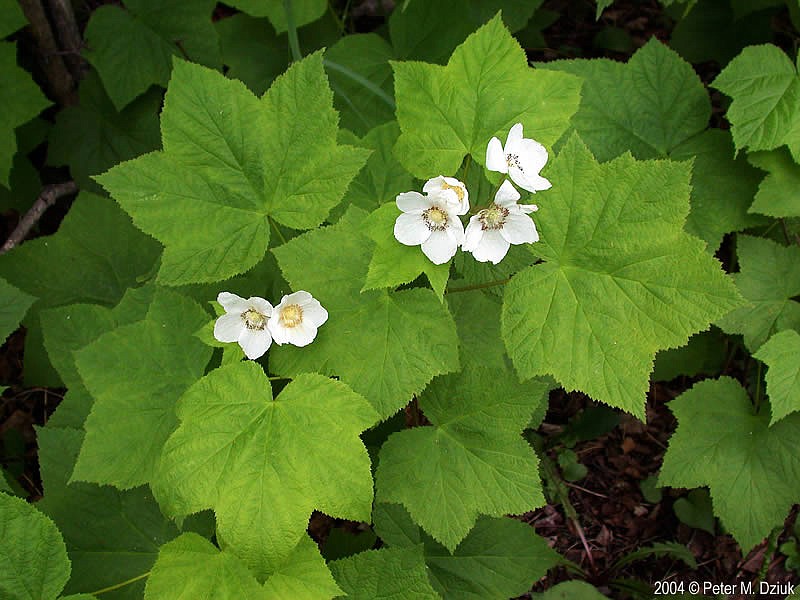PLANT NOTES: Thimbleberry Flower
A woodland treat growing beside the trail, Thimbleberry (Rubus parviflorus) or redcap, is found throughout the northwestern United States, Alberta and British Columbia. May to late June brings wrinkly, white 5-petaled flowers up to 2” in diameter, larger than their species name parviflorus or “small flower” suggests.
Blossoms are followed in mid to late summer with bright red drupelets that drape like a soft cap on a white receptacle. Like domestic raspberries, the receptacle stays on the plant when the berry is picked. Thinbleberries are squishier and seedier than red raspberries, with a sweet/sour juicy burst of raspberry-like flavor. Berries are sparse, not ideal for picking, but if you perservere, they make a wonderful jelly.
Growing in thickets from the foothills up to the subalpine regions, Thimbleberries have 5-lobed, medium green, palmate leaves resembling maple leaves. They are up to 8 inches across, soft and slightly fuzzy in texture with finely double-toothed edges (a good choice for wilderness toilet paper if you're in need!). Thickets may be found in part shade to sun; from open woods, woodland edges and forest clearings to stream banks.
Thimbleberry plants reach an average height of 3 feet, growing and spreading from underground rhizomes like raspberries. Thornless canes with woody stems and a pithy center rise from the rootstock each year. Most canes live 3 years and bear fruit the second and third years. Flowers form in clusters of 2-9 at the stem tips of the older canes.
The fragrant flowers support many pollinators including native bees, honeybees and bumblebees. Thinbleberry is the larval host and nectar source for the yellow-banded sphinx moth. Birds and bears feast on the berries in the fall, while deer browse the young leaves and stems.
You will find thimbleberry in the Dry Rock Habitat at the North Idaho Native Plant Arboretum. Open to the public, parking for the Arboretum is at 611 S. Ella Ave. or on the street.
Thimbleberry is featured on page 109 of publication “Landscaping with Native Plants in the Idaho Panhandle,” available at local bookstores and the Bonner County History Museum. Native Plant Notes are created by the Kinnikinnick Native Plant Society. To learn more about KNPS and the North Idaho Native Plant Arboretum, visit www.nativeplantsociety.org.

